#Linux Auto Installation
Explore tagged Tumblr posts
Text
iVentoy: Setup Network Boot of ISO Files Made Easy
iVentoy: Network Boot of ISO Files Made Easy #homelab #virtualizationhowto #iVentoy #NetworkBooting #BootISOFiles #ISOoverNetwork #LinuxAutoInstallation #WindowsAutoInstallation #PXEServerSetup #UEFIBoot #LegacyBIOSBoot #AutoOSInstallation
If you are like me, you used Rufus for years to “burn” ISO image files to a bootable USB drive. However, once I discovered Ventoy, I moved to using it for all my USB boot needs. It is a great tool, and we will talk about its advantages here. However, recently iVentoy was released that brings all the Ventoy goodness to network boot, which is great! Let’s look at iVentoy, the ultimate network boot…
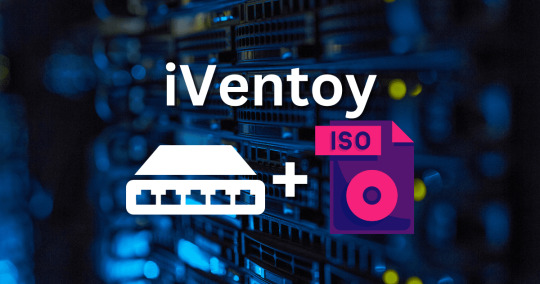
View On WordPress
#Auto OS Installation#Boot ISO Files#ISO over Network#iVentoy#Legacy BIOS Boot#Linux Auto Installation#Network Booting#PXE Server Setup#UEFI Boot#Windows Auto Installation
0 notes
Text
@ people who still play sims 2 on windows

Those of you who use DXVK but still experience pink flashing, could you try this for me? I am too lazy to reinstall Sims on my Windows partition
Open your dxvk.conf (or create one in the installation path of the game) and write:
dxvk.enableMemoryDefrag = True
Test this setting in-game for a while, then change it to:
dxvk.enableMemoryDefrag = False
And test this as well.
By "test it", I do not mean to test it for a mere 10-20 minutes. Test it thoroughly! Different hoods, different lots, take your time and play the actual game like you normally would! If normal gameplay works, try to stress test it (cheats, CC, high quality lot imposters, etc). If it takes a few days to test, so be it, but we really need to stop reporting too fast and make sure that our observations aren't coincidence.
I do not think this is going to be the big fantastic fix people are hoping for, but it's still intriguing. DXVK is set to "auto" out-of-the-box and my suspicion is that this is what makes the game run better on Linux: The GPU drivers on Linux are different, so perhaps the "auto" setting actually works properly in Linux, but not in Windows.
191 notes
·
View notes
Text
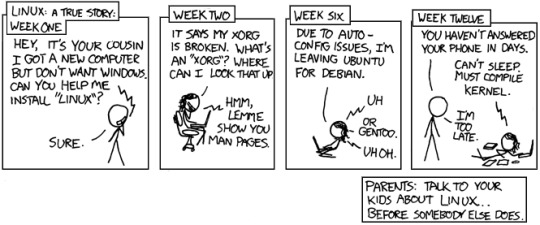
This really is a true story, and she doesn't know I put it in my comic because her wifi hasn't worked for weeks.
Cautionary [Explained]
Transcript Under the Cut
Linux: A True Story: [Cueball talks on a cell phone.] Week One: Phone: Hey, it's your cousin. I got a new computer but don't want Windows. Can you help me install "Linux"? Cueball: Sure.
[Cueball's cousin sits in an office chair with her laptop on her lap. She is on the phone.] Week Two: Cousin: It says my XORG is broken. What's an "XORG"? Where can I look that up? Cueball: Hmm, lemme show you man pages.
[Cueball's cousin crouches on the floor with the laptop on her lap. She is still on the phone.] Week Six: Cousin: Due to auto-config issues, I'm leaving Ubuntu for Debian. Cueball: Uh. Cousin: Or Gentoo. Cueball: Uh oh.
[Cueball's cousin lies on her stomach with the laptop on the floor. On the floor are several pieces of paper and a book. Cueball stands to her left.] Week Twelve: Cueball: You haven't answered your phone in days. Cousin: Can't sleep. Must compile kernel. Cueball: I'm too late.
[Box with text:] Parents: talk to your kids about Linux... Before somebody else does.
100 notes
·
View notes
Text
insanely controversial but as someone who daily drives linux i genuinely think that getting things from the Microsoft Store is the better option in most cases. you can use Winget to bypass having to use the actual app, but you Do Not need to be signed in either way.
Auto updates, standardized installation and uninstallation which is handled by the system rather than the progam itself. it's just good. think of any other device you use. your device installs a .dmg or an .apk or an .ipa or a .deb or whatever.
the proper way to install an app on windows is an ".appx" or ".msix" file. does anybody even know that. okay maybe because ".msi" files used to be used pretty often but. god it's the thing i dont understand about windows the most what do you mean you scour across the internet and download every app individually from different websites and run each installer individually. what is wrong with windows im sorry
19 notes
·
View notes
Text
My 3 days of Linux adventures
I figured out how to copy an iso onto a flashdrive to install linux and after realizing I was hitting the wrong BIOS menu button after a few hours of trial and error and a call to my more tech savvy sister
Started linux setup, got steam on there, realized how many of my games were windows only downloads, and proceeded to research for another couple hours how to get wine running and what front end to use because my computer has 3 gb of ram and I didn't trust that it could handle duel running OSs
Figure out there's literally a button for it in steam download options after which I say fuck it pass out and just reinstall linux the next morning hours faster than the first time I did.
Yay! Games installed!!
Download discord. Discord calls sound like I'm talking through a tin can on a landing strip no matter what settings I mess with. Assume it's something to do with the wifi cutting out. Investigate for hours to experiment with wifi power saving and settings and finally throw in the towel to talk to my sister again
My wifi despite showing two bars is actually faster than it's ever been and is downloading at ~100mbs. Give up for the night
Wake up the next morning to figure out what was fucking up, play around with mic settings and levels before finally reading a forum post from two years ago talking about window's auto installed noise cancellation drivers.
Resign myself to either needing to buy an external mic that's not right next to my computer's half broken fan, or needing to download specific noise canceling drives from github
Struggle with figuring out how to run shit from github for an hour
Resign myself to the external mic pt 2, try to boot up my favorite little rpgmaker puzzle game and it runs like a slideshow. This is my limit. I need my little mimic chest puzzle.
Begin researching again. Learn about more drivers I could potentially try installing or the much simpler method of just dual booting (computer has no ram. She's so old you guys)
Finally throw in the towel completely and decide to unfortunately switch back to Windows10. Download the iso accidentally and struggle around with getting it on the usb before getting the rar I need and the program to reformat the usb to take it (thank you ventoy) and struggle to download it while making sense of tutorials
Try to boot it. Fail.
What the fuck is a partition
Finally realized at this point that the prefix 'Sudo' in ubuntu is the command to run from root. That wouldve been nice to know
Finally delete partitions, run windows and get it reinstalled.
Honestly a 10/10 experience had a blast would do again
13 notes
·
View notes
Text
Version 624
youtube
windows
zip
exe
macOS
app
linux
tar.zst
I had a great week. Duplicates auto-resolution is easier to preview, and I have re-introduced a way to 'lock' a search page in place.
This release updates several important libraries in Windows and Linux.
full changelog
new build
The Windows/Linux 'future build' test last week went well, no reports of problems. It seems like Win 10 will still run the program, although I suspect a very old (i.e. un-updated) version may have trouble. If you cannot boot the build today, please consider running from source and choosing an older version of Qt in the interactive setup: https://hydrusnetwork.github.io/hydrus/running_from_source.html
If you use the zip or tar.zst, it does not seem like you have to do a 'clean install', but the build releases are changing a bunch of stuff so it is a good time to do one anyway: https://hydrusnetwork.github.io/hydrus/getting_started_installing.html#clean_installs
If you run from source, this is a good week to rebuild your venv. Users on python 3.13 no longer have to choose the (a)dvanced install.
locked pages
A long time ago, when you opened files 'in a new page' or from a subscription files popup, the page created would have no search controls. It would just be a static page that could hold files. It worked well as a 'scratchpad' to work on, but you could not easily search the files if you wanted to.
I replaced that mode with 'initialise the page with a system:hash predicate', which helped simplify things behind the scenes but makes it annoying to append new files or merge other pages into it, since the underlying system:hash stays stuck as what it was originally.
Today we fix this. All search pages now have a 'lock' icon button beside the tag autocomplete text input. Click this, and the current search collapses to a system:hash for the current files in view and the search interface is replaced with an unlock button. It will keep track of when you add or remove files, and if you unlock, the system:hash is of what is currently in view. Have a play with it, and you'll see how it works.
Whenever a new page is created with files--which usually means 'open in a new page' or a subscription file popup--it now starts in the locked state. The old 'no search enabled' behaviour is back, but if you want you can flip to a regular search with one click. Let me know how it goes!
auto-resolution preview
The duplicates auto-resolution 'preview' panel, when you were editing rules, was running way too slow. It could take thirty seconds to load up a count or a preview on a big client, every time you made a change. I've overhauled the whole thing to stream results in fast pieces, with pause buttons and faster cancel tech and better feedback. This system also now handles when the pair comparison takes a while to compute. It is pretty much all ready for 'A and B are visual duplicates'.
I fixed a couple more false positives in 'A or B are visual duplicates'. There's one edge-detection situation that I poured a ton of time into and still failed to catch, so I'm going to keep thinking about it. Please send in any more weird pairs you come across!
Auto-resolution rules in semi-automatic mode will now only queue up 512 items for 'ready to action'. This queue can take a while to build and resets any time you change the rules, so I'm limiting it to keep things snappy. You can change the limit or remove it entirely in the edit rule panel.
misc
Ratings look nicer and line up great again!
A bunch of number-tests across the program have new 'less than or equal to' and 'greater than or equal to' operators.
next week
I only have one week before my summer vacation week, so I'm just going to fix little stuff and clean some code.
2 notes
·
View notes
Note
I'll be so real with you, I've been thinking of switching to Linux but I know there's less compatibility & I am a goofy bloke who wants his programs, but seeing as there's nooo way I'm switching to W11 I might do it if I ever have to give up my W10.
There is surprisingly a lot of compatibility with modern programs (excluding Adobe products, those can work on Linux, but the process is very involved and jank) it depends on what your needs are. Many people tend to look into Linux mint as their first distro since it emulates the feeling of Windows and it's comfortable to try out.
Good news though, if you're a gamer, there's never been a better time to game on Linux; Valve has been putting a lot of work into interoperability for Windows games on Linux, through Steam Proton (free for steam users btw, and auto installs and configures for you!). I personally installed Ubuntu on an old Mac chassis, and now it's a Balatro machine 😂
If you do make the switch, best of luck and remember to have fun!
3 notes
·
View notes
Text
Having a Moment. Since switching to Linux, none of my art programs have worked (even following guides to get Clip Studio Paint installed didn't work...) and all my attempts at making new sprites (in MyPaint and in Krita) has resulted in failure. I tried to use an old spare tablet I had laying around, but none of my Clip Studio Paint brushes/auto actions carried over AND pen pressure doesn't work with the pen I bought.
I'm tired lol... my only resort now is making The Rewritten Journal and Trick Thrice in Aseprite, though they'll look wildly different than how they're supposed to...
3 notes
·
View notes
Text





Beautiful <3
For anyone interested, it was actually somewhat simple (after trying to get it to work for months...
For anyone interested: I downloaded Linux for Steam (also works with Lutris): https://github.com/kevinlekiller/reshade-steam-proton
as described. I actually used the newest Reshade version. It auto-detected that the Sims 2 is a 32 bit game and correctly installed everything. Then I went to the game folder and renamed d3d9.dll to d3d9.asi and put that file into my RPC mods files. That was it!
To get the depth functions to work, I used this tutorial, again.
I haven't played for longer times yet, so it's absolutely possible that the game is more prone to crashes this way. Let's see. I also need to make some more thief-ish Reshade templates.
37 notes
·
View notes
Text
Elevate Your Business with Affordable Efficiency: A Comprehensive Guide to Cheap Linux VPS

In today's fast-paced digital world, efficiency and cost-effectiveness are at the forefront of business priorities. A Cheap Linux VPS (Virtual Private Server) provides a compelling solution, combining the robustness of a dedicated server with the affordability of shared hosting. This guide explores how small to medium-sized businesses can harness the full potential of Linux VPS to boost their online presence, enhance security, and manage data seamlessly.
Linux VPS hosting is a virtual hosting platform that imitates the working of dedicated hosting in general hosting. It supports the Linux operating system and this provides users with the ability to control and manage their own server space. In this section, you’ll understand how Linux VPS works and why it’s important that it can offer your web applications their separate environment – essential if your business is focusing on stability and performance on a limited budget.
Cost-Effective Hosting Solutions
Transitioning to a Linux VPS can significantly reduce your web hosting costs. Unlike traditional dedicated servers that come with high monthly fees, Linux VPS offers a cost-effective alternative without compromising on the services and capabilities offered. This part of the blog examines how the affordability of Linux VPS makes it an ideal choice for businesses aiming to optimize their IT budget while still enjoying high-quality server performance.
Customization and Control
It has been established that Linux VPS is highly customizable, which makes it even more unique. Users have root control over their servers to install the software as well as configure the settings inclusive of the permission levels that they wish to set on their servers. In this level, we are going to understand how this level of control is favorable for your business to customize server environments that meet and complement your business operations.
Enhanced Security
The ‘Enhanced Security’ section emphasizes the fact that Cheap Linux VPS comes equipped with a range of high-level safeguards by default, thus allowing its users to enjoy premium protection services at an affordable price. Linux VPS services include flexibility, featuring firewalls, and intrusion detection systems to enhance the security of data held in servers. The emphasis on security is essential for preserving the compliance, discretion, and safety of commercial processes and reducing concerns. Linux VPS has secure hosting features thus protecting from external and internal threats through the appropriate measures of access control measures and real-time security monitoring features. As a result of this improved security, it becomes possible for businesses to entrust Linux VPS hosting for the security of their digital products.
Scalability and Flexibility
The ‘Scalability and Flexibility’ part highlights the opulence of Cheap Linux VPS, which is capable of adjusting instantly to the company’s growth. Auto scale: With Linux VPS, the possibility of growing resources such as CPU RAM, and disk space is straightforward and does not cause much downtime when the traffic increases or during the expansion of several projects. This capability guarantees that corporations can run at optimum in sharp contrast to bandwidth; it offers the capacity to alter resources in actual time. Also, the possibility of having fewer resources during less busy times proves useful to reduce operating expenses while still being a very efficient and versatile hosting service for various enterprises. As an illustration, this section embraces explanations of how Linux VPS serves as a pillar to businesses that want to expand without being limited by traditional hosting platforms.
Performance and Reliability
Quality is one of the key factors of software, hardware, or service delivery, and it entails efficiency and effectiveness. High performance means that the tasks of a system are executed quickly and without complications, which is an important aspect of guaranteeing the efficiency of these services. While, reliability ensures dependability over time, both in terms of actual time and number of times a system is used, and it assures minimal breakdowns and failures. Combined, these are crucial preconditions for the formation of trust and reliability in technology and services for users to rely on for their work and operation. It has been found that with an organization having excellent performance and reliability in their products and services, the chances of customers sticking to the product, minimal downtimes, and enhanced competitive advantage are realized.
Software and Application Support
The ‘Software and Application Support’ section draws attention to Cheap Linux VPS’s compatibility with various software and applications which is one of the major parts of its core offer. Linux VPS incorporates multiple features, including web hosting control panels, custom development frameworks, and databases like Node. Js and MySQL, satisfying various requirements of businesses. This integrated support guarantees the technologies that are being used by businesses are compatible with the tools needed in their adoption process. Also, the use of the Open-source Linux operating system and the Linux community provides a pool of software that can be used free of charge This makes the utilization of the VPS very effective and cost-efficient apart from its flexibility. It is highlighted in this section that Linux VPS not only means a versatile solution for a wide variety of applications but also means an environment for experimentation and distinct personalization.
Conclusion
Selecting an affordable Linux VPS is a wise choice as doing so provides several benefits on costs, security measures, server plans, and the environment. Both Linux VPS are highly suitable for businesses ranging from start-ups to well-established companies because it is cost-effective, dependable, and efficient. Welcome Linux VPS, as the core of Linux hosting services, opens doors to enormous opportunities for your business.
2 notes
·
View notes
Text



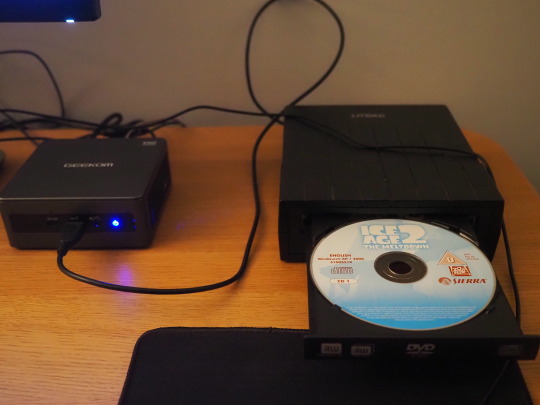

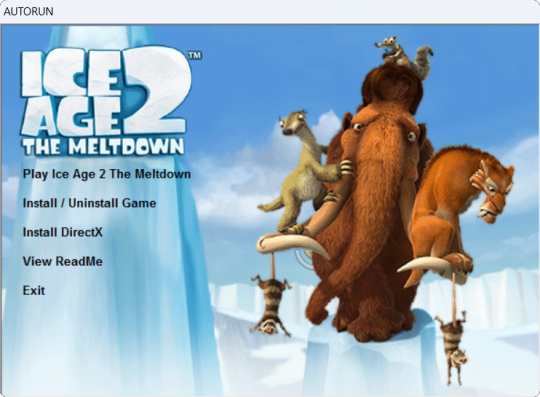
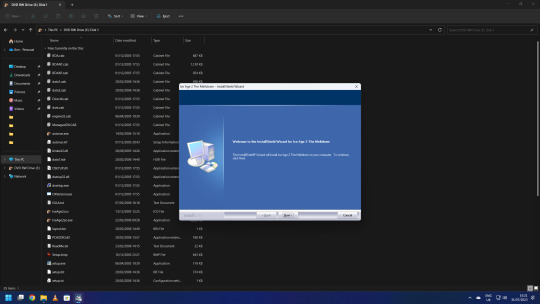
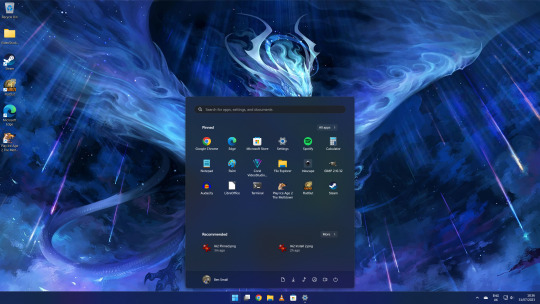

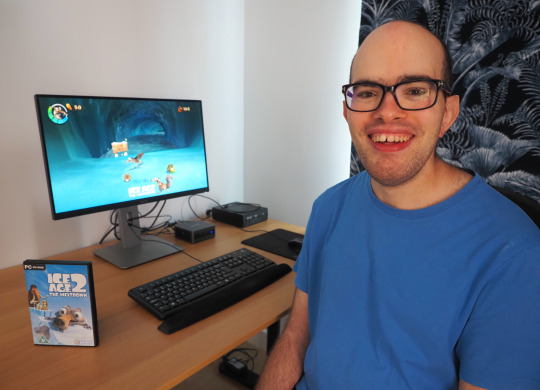
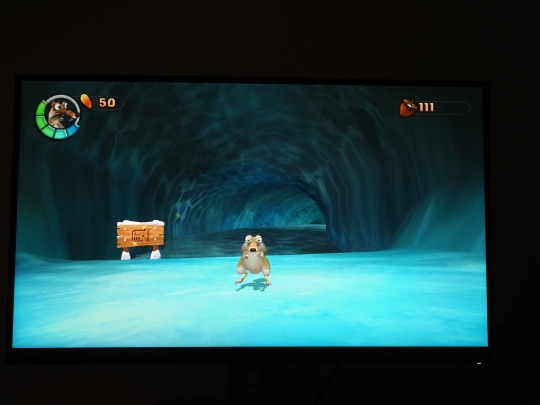
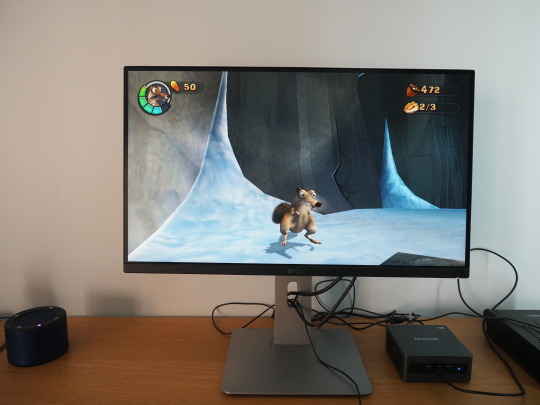

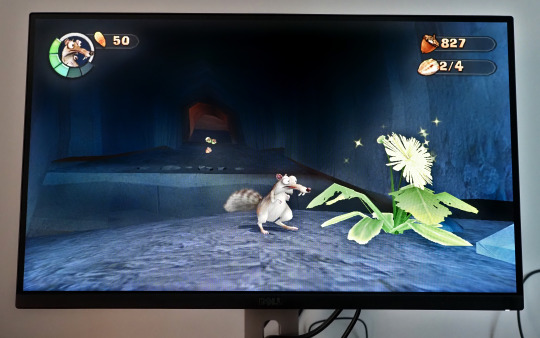
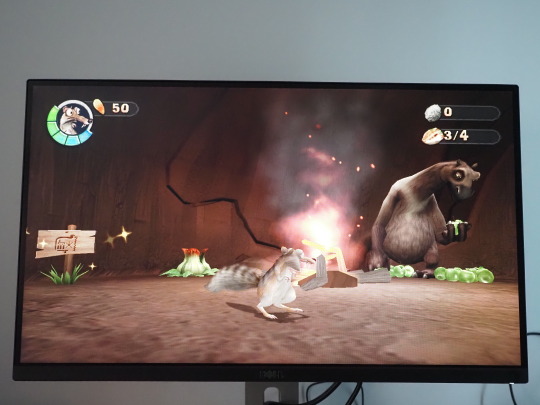
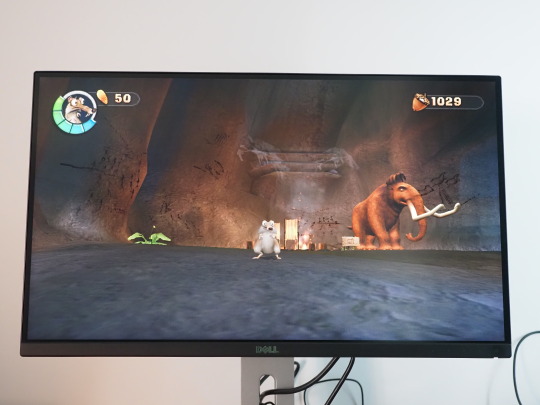
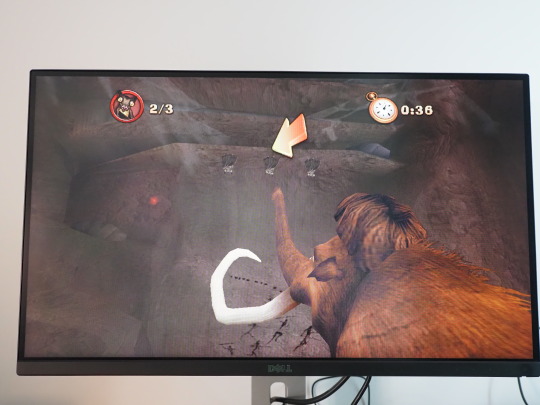
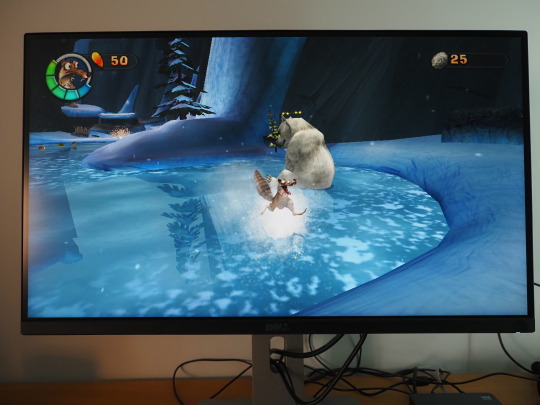







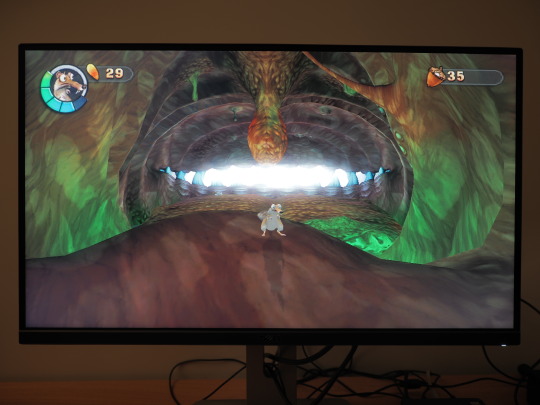
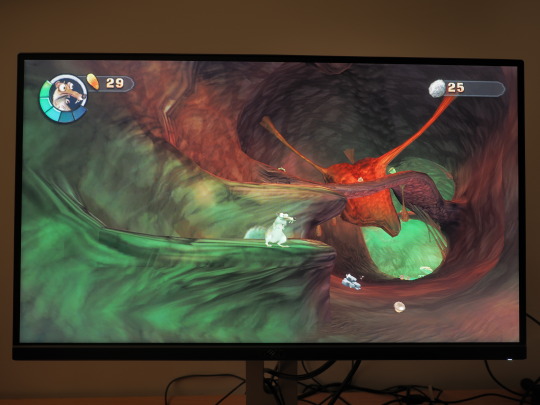
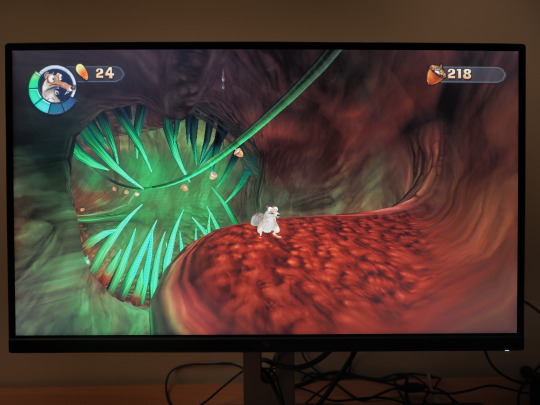

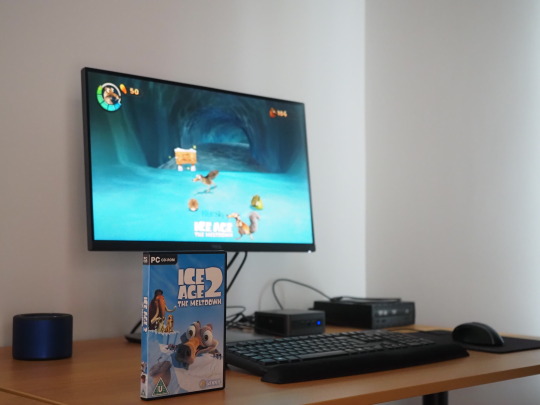
2023
Ice Age 2 The Meltdown game.
On the 31st July 2023, I installed Ice Age 2: The Meltdown onto my system to test-run it on Microsoft's Windows 11.
I connected a portable Liteon DVD-ROM optical drive to my Mini-PC to install it using the 2 CD discs.
Here is a picture of me with the game box!
Ice Age 2: The Meltdown, based on Blue Sky Studios 2006 film of the same name, was developed by Eurocom and published by Vivendi Universal Games (Sierra Entertainment).
The game works on the latest versions of Windows and also works on Linux using Wine (PlayOnLinux).
I put Disc 1 in first and opened the auto-run from the disc. I clicked the 'Install Ice Age 2: The Meltdown' option from the list. The game uses InstallShield software to install itself onto Windows. I switched the discs around towards the end of the install. Once it had finished installing onto the system, I chose to launch the game.
After going through the intros, I pressed the enter key to go to the main menu. Firstly before starting the game, I configured my favourite keyboard layout. Afterwards I then started a new game and selected a save game slot (Slot A).
As I was playing Ice Age 2, I got to the Forest 2 stage, shortly after going through this stage, Windows 11 asked if I wanted to run the game in 'Compatibility Mode', I chose to run the game with this. It offered this as it knew the game application running was intended for an older version of Windows. However compatibility mode didn't work and the game crashed to the desktop.
The app process name for the game is 'IceAge2pc.exe' (32-bit) when running. The CD (Disc 1) is required to play the game.
I re-launched the game and had to re-configure everything and start from the beginning again, however the game seemed to work much better without running it in the legacy mode Windows offered.
I tried again and successfully played the game up to the end of the Maelstrom level, completing this stage which in my opinion is the best level in the game! Here are the in-game pictures I took with the camera of some of the stages. I had to use HDR camera effect for some of the pictures. The levels shown in the pictures are the Waterpark, Forest, Ice River and Maelstrom.
I had to use my camera for the pictures as the game doesn't allow for print-screening due to Windows copy protection. When running Ice Age 2 in windowed mode, if you click out of the game it will darken the game screen and pause everything until you click on it again.
The game defaults to a screen resolution of 640x480, so I changed it to the maximum resolution of 1024x768. Interestingly the game didn't scale to full screen as when I tried it previously on another PC running Windows 10, but stretched to fit the screen instead. This was because of the 'Gaming Mode' function which is enabled in Windows 10. This mode is disabled by default in Windows 11 and the game worked perfectly without it. However, the game always runs in the 4.3 aspect ratio, but uses a fisheye lens effect which defaults to the 16.9 aspect ratio, so changing that fixed the gaming experience on this monitor. You can read more about display settings for the game in my write-up.
Audio played through my Mini-Rig Bluetooth speaker, which sounded great! The game uses a stereo sound set-up, which can act as surround through headphones.
Back in 2020, Dad gave me a copy of the Ice Age 2: The Meltdown video game which he found on eBay. I did a detailed review of the game and an unboxing review.
See my reviews in the links below:
There are a number of cheat codes you can enter in the pause menu, these include unlocking all the bonus content and the ability to unlock the 'Level Select' menu, plus more.
See all the cheat codes for the game here:
https://gamefaqs.gamespot.com/pc/931239-ice-age-2-the-meltdown/cheats
Playlist featuring all the levels:
https://www.youtube.com/playlist?list=PLyj4UFt4ma4_XQ0RZ3FjpFZAa7jvjhPc9
A link to the complete in-game music composed by Jim Croft:
https://www.youtube.com/playlist?list=PLO4jlmGoc6uDm0QVLyMqURTP2ciHWjCF_
Overall despite being 17 years old, running the game on Windows 11 worked a treat! It was great fun playing Ice Age 2: The Meltdown again as it is fun, humorous and challenging. Its music is memorable, vibrant and colourful just like its movie soundtrack!
However, I think that both Ice Age 2: The Meltdown (2006) and its Activision sequel Ice Age 3: Dawn of the Dinosaurs (2009) should be made available as a digital download through game distribution services such as Valves Steam alongside Ice Age: Scrat's Nutty Adventure (2019) to keep them running into the future without the need for a disc.
For a full list of all the Ice Age video-games see:
https://iceage.fandom.com/wiki/List_of_Ice_Age_video_games
See my video below. See videos underneath for the in-game bosses and also bosses in Scrat's Nutty Adventure on YouTube.
Scroll down to see my write-up on Cretaceous and Maelstrom!
5 notes
·
View notes
Text
i've been on a linux adventure recently —
one day i woke up and thought, "today is the day", and began working through the linux from scratch handbook. it turns out that most people do not in fact do this on bare metal because compiling everything yourself and just punting on package management does not provide for a workable system. at least, not as a daily driver. (this guy tried writing a debian from scratch where step 1 is getting apt going, but apparently it is not just outdated, but incorrect even at the version specified).
you're supposed to just do this in a virtual machine and treat it like a learning exercise. i did not do this, and spent twelve hours compiling all the packages and walking circular dependency trees basically trying to slowly divorce yourself from the host system's toolchain.
in the process it's very clear how "down in the dirt" linux as a whole is; nothing is made for each other, all the packages are just picked up from here and there, sometimes the maintainer doesn't update their domain and pkg-conf is just Gone so you have to dig it out of the gentoo repo. i kind of love it. it feels organic, it feels natural. of course this emerged. of course it all kinda works, of course it all fails easily.
it's a lot like the human body. that is, say you have a really nicely integrated distro. they probably have like fifty different upstreams, and teams that are making extensions or monkey patching the upstream as they go to slowly hone these disparate things into stuff that vaguely resembles each other. you introduce redundancies and reliability checks. you try to migrate to stuff that will enforce this (Ubuntu enforces Wayland by default; Fedora defaults you to btrfs; downstream distributions then in turn undo some of these like how Pop! OS goes back to X11).
you keep reinforcing against common failures with subsequent processes that can watch for those failures and prevent them, provide fallbacks, self-heal if possible.
and then in turn for everything else you isolate its ability to even impact the core system. ideally you're immutable — say, vanilla os, or some people use nix or fedora silverblue. but most of the time there's just a hybrid approach where we sandbox as much as we can. steam os completely replaces the OS every update and keeps the home folder. chromebooks do likewise. macos has been doing this since i think el capitan? and apfs is intended to have a less hacked-in way of providing for a core system partition that nothing else can touch.
that whole thing is really beautiful, i think — have BSDs replicated this? i don't know; i have never used one very seriously. it felt like they intended to start from scratch with a monolithic basis, but it feels like i'm in the early 2000s again when i try to debug a bsd system and look for documentation.
anyway, so after twelve hours i fumbled a very basic thing. that is, i assumed, why not? i will use UEFI, but i had already partitioned as if i was doing an MBR. so i tried to add a UEFI partition and inadvertently, in trying to unmount and safely perform this operation, rebooted into a system that was freaking out because there was no UEFI partition. it kept reboot cycling into a wifi recovery agent and occasionally realising there was a USB attached.
i moved to arch and performed the entire install in like less than an hour. but damn it, now i'm frustrated. i wanted to see this through. today i decided to move to fedora to better have an overarching experience for this specific hardware (the auto-rotation and on screen keyboard support is amazing on gnome 44) and then try to throw all this into a Box and do it again. but given so much of this was tedious, i would probably just ... automate it. but aren't we getting too close to just a distro?
4 notes
·
View notes
Text
Level Up Your Fun with These Top 15 Gaming Platforms for PC
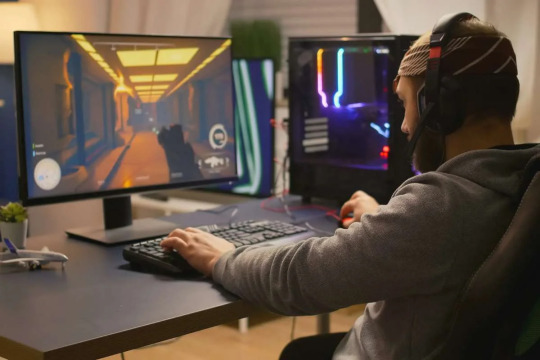
Source: rocketbrush.com
If you love PC gaming, the right platform can change everything. Gaming platforms for PC are where you get your games, play with friends, grab special deals, and build your dream game library. But with so many options out there, which one should you pick?
In this article, we break down the top Gaming Platforms for PC, what makes each one special, and how they can take your gaming experience to the next level.
1. What Is A Gaming Platform?
A gaming platform for PC is a software service called a launcher or store that handles everything from a digital storefront and game management to social features and updates. These platforms simplify launching games, patching them, organizing your library, cross-platform access, and connecting with friends.
Examples include Steam, Epic Games Store, and Ubisoft Connect.
Top 15 Popular Gaming Platforms for PC:
Below are the most widely used Gaming Platforms for PC,

1. Steam: The leading platform with the largest PC library
Performance & Compatibility – Solid performance, works on Windows, macOS, and Linux via Proton.
Key features:
Massive game catalog
Social/Community tools
Workshop/mod support
Cloud saves
Frequent sales
Visit Website
2. Epic Games Store: Free weekly games, exclusives
Performance & Compatibility – Great speed, light on the system, and Supports Win/Mac
Key features:
Free weekly title
Developer-friendly cuts
Cross-platform syncing
Mod support
Basic social
Visit Website
3. GOG Galaxy: DRM-free library, retro titles
Performance & Compatibility – Fast and light, Supports Win/Mac/Linux
Key features:
DRM-free games
Old title supports
Optional client
Integration with others
Mods friendly
Visit Website
4. Ubisoft Connect: Ubisoft’s launcher with in-game rewards
Performance & Compatibility – Moderate resource use, Optimized for Windows
Key features:
In-game challenges/rewards
Uplay to connect and upgrade
Social stats
Cloud sync
Storefront
Visit Website
5. Battle.net: Blizzard/Activision games management
Performance & Compatibility – Lightweight, Fast on Windows
Key features:
Access Diablo/Overwatch/CoD
Cross-game chat
Auto-update
Easy installs
News hub
Visit Website
6. Origin (EA App): EA exclusive and third-party titles
Performance & Compatibility – Efficient, Supports Windows/Mac
Key features:
EA titles + others
Subscription (EA Play)
Early trials
Social/chat
Cloud saves
Visit Website
7. Microsoft Store/ Xbox App: Microsoft-curated store and Game Pass
Performance & Compatibility – Smooth on Windows, UWP format
Key features:
Game Pass integration
Cross-platform Xbox sync
Cloud storage
Social/chat
Frequent bundles
Visit Website
Similar Article:
The Best Gaming Websites for Gamers of All Levels
Boost Traffic with These Smart Gaming Website Design Tips
8. itch.io: Indie games hub, pay-what-you-want
Performance & Compatibility – Lightweight Windows and web client
Key features:
Indie discovery
Custom pricing
Developer support
Tag/search
Simple installs
Visit Website
9. Amazon Games: Amazon’s PC storefront
Performance & Compatibility – Standard Windows client
Key features:
Prime member benefits
Free titles
Game streaming (Luna)
Auto-update
Cloud saves
Visit Website
10. Bethesda Launcher (merged with Steam): Older Bethesda titles, updates via Steam
Performance & Compatibility – No longer active, legacy Windows support
Key features:
Official updates
Mods support
Community hub
Auto-patch
License management
Visit Website
11. EA Play (via Steam/Epic/Origin): EA’s subscription game hub
Performance & Compatibility – Hosted in the existing launcher, normal performance
Key features:
Unlimited EA games
Early access
Cross-platform cloud saves
Discounts
DLC access
Visit Website
12. Humble Bundle: Bundle deals, DRM-free + Steam keys
Performance & Compatibility – Lightweight API app
Key features:
Charity bundles
DRM-free or Steam keys
Library tool (App)
Cross-platform support
Cloud sync
Visit Website
13. Google Stadia (legacy): Cloud streaming on PC (soon retired)
Performance & Compatibility – Web browser-based, no hardware needed
Key features:
Stream full-quality
No install
Cross-platform play
Controller support
Instant access
Visit Website
14. Nvidia GeForce Now: Cloud gaming using its library.
Performance & Compatibility – Great on any device, needs a fast net
Key features:
Game streaming we own
RTX/4K support
Multi-source linking
Free tier
Cross-platform
Visit Website
15. Amazon Luna: Cloud stream subscription platform
Performance & Compatibility – Smooth if 20+ Mbps internet
Key features:
100+ game library
Prime perks
Multi-device
Web/PC app
Up to 4K resolution
Visit Website
Similar Article:
Popular Free VR Games: The Ultimate Guide for Virtual Reality Enthusiasts
The Best Football Games for PC: A Thrilling Dive into Virtual Pitch Battles
Play These 8 Free Online Games without Downloading
Comparing Features: What to Consider
When choosing a Gaming Platforms for PC, prioritize these features:
Game Library & Exclusives – more titles and unique deals matter.
Pricing & Freebies – free games and sales add value.
Client Performance – Lean launchers run better on older PCs.
Compatibility – OS support matters; native Linux/macOS vs compatibility layer.
Community & Social Tools – chat, friends, achievements, and workshops enhance the experience.
Gaming Platforms Revenue and Popularity
Image by primipil from Getty Images
Steam dominates revenue share, with annual game sales of ~$1.5 billion by 2014 and 90M monthly active users by 2018,
Epic Games Store grows fast via weekly freebies and steep dev revenue share.
GOG appeals via DRM‑free and retro titles; it maintains a loyal niche manuel depaz.medium.com+5 en.wikipedia.org+5 thesun.co.uk+5.
Microsoft, EA, and Ubisoft log strong downloads tied to exclusive franchises plus subscriptions.
Cloud platforms like NVIDIA GeForce Now, Xbox Game Pass Ultimate, and Amazon Luna gained ground, thanks to accessibility and streaming tech.
Players stay loyal to Gaming Platforms for PC that offer the best catalogs, pricing, convenience, and social gaming.
Future Trends in PC Gaming Platforms
Cloud Gaming Takes Off: Streaming services now dominate as hardware barriers fall. Platforms like NVIDIA GeForce Now and Xbox Game Pass expand offerings.
Cross‑Launcher Integration & Library Unity: Clients now integrate across platforms. GOG Galaxy leads this by unifying libraries from Steam, Epic, Ubisoft, and more.
DRM‑Free & Consumer Control: Demand rises for ownership and offline play. GOG’s model pushes others to offer DRM‑free options.
Subscription & Bundled Services: Game Pass, EA Play, Ubisoft+, and Humble Choice highlight a shift from single purchases to game libraries-as-service.
Enhanced Social and In‑Game Features: Expect deeper social tools: cross‑platform chat, built‑in streaming, game matchmaking, and community features across Gaming Platforms for PC.
Source: How to have your videogames in one place?
Tips for Optimizing Use
Image by Dean Drobot
Use GOG Galaxy to centralize your libraries.
Claim all free offers (Epic weekly, GOG monthly).
Subscribe to bundles that fit your style (e.g., Game Pass for variety, EA Play for EA catalog).
Track deals via Humble Bundle or Cheap Ass Gamer.
Test cloud options like GeForce Now for hardware‑light setups.
Prioritize DDR‑free options if you prefer ownership, like in GOG’s model.
Conclusion
Gaming Platforms for PC offer more than just game install systems; they shape how you buy, play, share, and manage titles. From the vast reach of Steam to the niche appeal of DRM‑free GOG, and from publisher launchers like Ubisoft Connect to cloud giants like NVIDIA GeForce Now, each platform brings unique value.
Your ideal Gaming Platform for PC depends on your priorities:
Is it game variety?
Cost savings?
Owning your games? Or
Streaming flexibility?
The future promises better integration, richer social tools, and less hardware dependence, making gaming platforms for PC even more accessible and engaging.
0 notes
Text
Multiple days later, I've actually managed to get Debian 12 running on my old MacBook. I'm going to throw my troubleshooting into the world, just in case. Not like anybody comes to Tumblr for tech support, but I'd be remiss if I didn't at least present this information in a public way.
Solved
GPU Drivers
Apparently this whole time, the thing causing the black screen on boot was the AMD dGPU. These things are known for failing in this generation of MacBook. Mine, however, has not failed, so I didn't even think to suspect it. I know it's okay because OCLP macOS, Zorin OS, and Pop!_OS were all capable of booting with it still enabled.
For some reason, though, Debian absolutely shits its pants when presented with the AMD Radeon 6490M. I followed this guide for Ubuntu 20.04 LTS and disabled the AMD dGPU, forcing Debian to only see the Intel HD 3000 iGPU, and everything booted–no problem.
Wi-Fi Drivers
Debian won't install the necessary Wi-Fi drivers for this machine during install, but I got the Wi-Fi working, regardless. However, apparently the "b43" open-source driver really hates the Broadcom BCM4331 chip that 2011 MacBook Pros have (despite claiming to support it). Not only did it not detect 5 GHz networks, but it also would just randomly stop working. The network would stay connected, but stuff would just get super slow and eventually start timing out. The fix was to purge "firmware-b43-installer" and install the "wl" (broadcom-sta-dkms) drivers instead (I did this in reverse order because I didn't want to lose connection and have to get up and plug the thing into Ethernet. Nothing bad happened as far as I can tell). Now the WiFi works perfectly.
Custom Cursors
The cursor I use (A Linux Conversion of the Posy Cursor for Windows) did not like being placed in [ ~/.local/share/icons ]. That wasn't enough for it. The arrow and pointer would work, but only in some apps. The loading hourglass was nowhere to be seen. Apparently, you also have to place a copy of the cursor folder in [ /usr/share/icons ]. Which is weird because Debian doesn't allow you to move files into that directory without using the "sudo cp" command in terminal, but whatever. The folder's there, and my cursor's fixed.
Partially Solved
Custom Theme
On Debian (although I think this is more specifically a GNOME issue), custom shell and GTK themes just love to be inconsistent. I still haven't fixed everything. Some apps still disobey my custom theme's macOS-like window control buttons, but it's whatever. They were always a luxury, so I can deal with some apps (like Firefox) not having them.
This isn't, however, the only thing that's still broken with my Custom Theme. For the record, I'm using Orchis. Apparently GNOME's auto dark/light mode just doesn't work anymore. The option is still there in Settings, but setting it to "Default" (which clearly shows an icon of both a dark and light window, indicating it'll change on its own) will do nothing. It just picks one theme and stays that way. I tried using GNOME extensions to fix this. Specifically, I tired "Night Theme Switcher" and "User Theme X." Both would properly switch the Shell Theme. However, they wouldn't change the GTK4 theme, which meant apps like the GNOME Files App would just not obey the new system theme unless I manually added the theme's files to [ ~/.config/gtk-4.0 ] and then logged out and in again.
So: bummer. Auto Light & Dark mode doesn't work, and for now I don't think it's possible to fix. Not the end of the world. I just set everything to dark mode for now, but it is a bummer. I do like using Light Mode during the day, and on the low contrast screen this 14-year-old laptop has, it really helps, but oh well. It's not a deal breaker.
Not Solved
Debian 13 "Trixie"
During my escapades and attempts to make Debian work, I ended up trying to install Debian 13 RC1 to see if newer packages and kernels would fix the AMD GPU issue. I tried both the Netinst ISO and the DVD ISO. Both of them would not work, period. I would select the EFI boot from the Mac Boot Picker, and the installer would immediately black screen and freeze. Debian 12 at least let me install the operating system before failing. Why Debian 13 RC1 did this, I have no idea. I haven't tried installing it since I disabled the dGPU, and I won't be trying until Debian 13 is the main stable release. So for now, Debian 13 is completely unrunnable and uninstallable on this hardware (in it's default form, anyway), and I can only hope the dGPU disable fixed it, or whatever they do between now and it's first stable release does.
#rambles#tech#technology#we're back baby#linux#debian#debian 12#debian bookwork#debian 13#debian trixie#computer#computers#linux help#troubleshooting#gnome#gtk#macbook#planned obsolescence#preservation
0 notes
Text
Version 626
youtube
windows
zip
exe
macOS
app
linux
tar.zst
I had a good week. There's a bunch of fixes and some new stuff.
full changelog
highlights
The AUR (Arch Linux) release broke during my vacation. It was my mistake--I didn't catch something that was deprecated for way too long, and suddenly file imports wouldn't work--and I'm sorry! If you have a recent source installation or ran into the AUR issue particularly, please update to this v626 when you can and you should be good again.
I improved the accuracy of my 'A and B are visual duplicates' test again. Almost all my false positive and false negative examples are fixed. I still have a little more work to do, but I'm feeling pretty good about it overall. I am still interested in seeing any more bad pairs, either false positive or negative.
File export filenames are a bit smarter about maximum file and path length. If you do a lot of exporting with tags and your filenames regularly get clipped, it should work better now, particularly with unicode and patterns that produce subdirectories. There's a new setting under options->exporting, too, that lets you override how long your export filenames can be.
The default derpibooru downloader stopped getting tags. I think I've fixed it, but let me know if there are still any problems.
For a bit of fun, I added support for Paint.NET files (.pdn) this week. They should have resolution and thumbnails.
If you are an advanced downloader maker, please check the changelog about the 'url slash test'. I'm interested to know if an URL-handling change will break anything on your end.
next week
More duplicates auto-resolution work and polish.
0 notes
Text

not calling out anyone here - these are sentiments I have seen before. And I get it. I'm a power user of Windows, and Microsoft is awful and Windows gets worse every year (damn I miss WinXP's search functions so much...) but for a lot of us - Linux is not better.
Less invasive, sure. Less loaded with bloatware. More customizable.
But those features are only useful if the computer also does what you expect your computer to do, and "customizable" is only useful if you understand the options and how to set them.
Virtual box is weird and complicated and does not integrate well with the rest of the computer. (And a daughter who plays Genshin, which I gather is difficult, although maybe not impossible, to do in a virtual box.)
I would definitely need a virtual box; I'm a power-user of programs that have no Linux versions, including Adobe Acrobat Pro. (If you want to convince me there's a good Linux alternative, talk to me about its bookmark and form field editing features.)
Damn I hate having to download & install an update for Discord every couple of days. (I know there's an interface or wrapper or something that will let it auto-update. It takes more space on the disc, which my Linux laptop doesn't have to spare.)
Cannot find my files in Linux. I'm sure they're organized in some much-more-logical way - but the point is, I don't know that way, and don't want to spend a few months being frustrated with the system trying to get used to it.
My job is Windows-based. Cannot stop using Windows; could only shift to "and ALSO use some different system when not at work."
Linux often has tech-support issues - there are very few purchase-new Linux laptops, and the rest often have issues like "must manually install these drivers from a flash drive before your laptop will recognize the internet."
A large portion of the Linux community is hostile to Windows users. Answers to tech questions on forums often include comments like "if you don't have the technical details of the software and OS you're using, you're doing it wrong. Go away and come back when your question is coherent." ...Which does not help a person searching their phone trying to find answers to "why does my new-Linux install not connect to the internet?"
There is no Switch From Windows To Linux website, forum, or support community. There are several Linux options (...several hundred, but we'll limit it to the half-dozen often recommended to newbies), and there's no coherent pros & cons lists, because the people recommending them don't understand what people get out of Windows well enough to make those lists. Microsoft comes with free tech support for new purchases. If your laptop or desktop isn't working correctly when you start it, or there's issues like "sound keeps shutting off," you can contact them, and they will walk you through the problems. (Or, will troubleshoot and say "you have a hardware issue; sorry; I can't help.") There is no equivalent for Linux... there's "visit some forums, in which you can find advice for your problem dating back to 1993; try to find something recent because the old advice probably involves software pieces that no longer exist."
I gather that Linux is terrific for coders, for programmers. Maybe for sysadmins. However, for office workers & students, it's not better, just not full of adware.
That is a good feature! That is a GREAT feature!
...that is not enough of a feature to give up the software that doesn't have Linux support, nor to have to learn a new OS that isn't what most jobs & schools use.
(Want to fix that? Set up a How And Why To Switch website and be welcoming and friendly to clueless newbies who will ask things like "does Linux work for Facebook?" and "how do I get to my photos on Linux?" Because until that exists, Windows is going to dominate the office spaces; schools are slowly being ceded to Google's Chromebooks.)
(For actual would-be Linux newbies: My #1 bit of advice is choose a password that you don't mind typing. A lot. There are people who claim you can Linux without the terminal - without command-line instructions. I assume they are not lying, but they are not talking about the Linux most of us are stuck working with. #2 advice is, when you search for answers online, limit the results to the past year.)
A boy can dream, can't he?
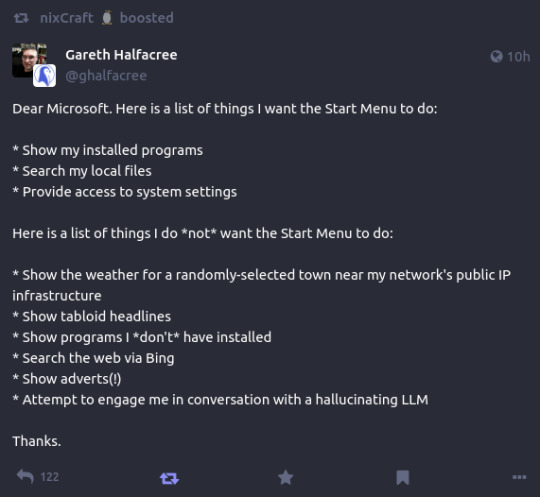
176K notes
·
View notes